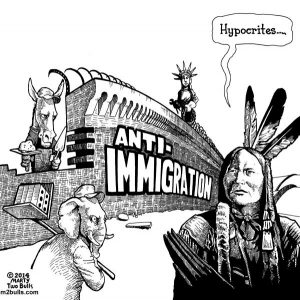In working though my final research paper one of the remarkable discoveries I made was the increasingly important role that traditional knowledge is playing in the environmental sciences and resource management. This makes sense given the value Aboriginal populations bestow upon “place” and the collection of information and data through observation that is passed orally from one generation to the next for hundreds of years. The recognition of the valuable contribution that traditional knowledge can make to the sciences has resulted in greater collaborative efforts when designing policy or making decisions.
West Coast Environmental Law Blog
While this particular blog is from 2015, it discusses the experience of a lawyer who was invited to speak at a conference on “Best Practices in the Use of Aboriginal Traditional Knowledge in Resource Management” which was held in the Yukon. Some of the questions asked at the conference included:
- What does Aboriginal Traditional Knowledge (ATK) provide to wildlife management that science-based knowledge does not?
- How can scientists and ATK holders better communicate and work with each other?
- How is ATK best documented, communicated and shared?
- What institutional arrangements and prejudices exist that undermine or disadvantage the treatment and use of ATK in research and resource-management decision-making? How could these obstacles be overcome?
- Where findings from science and ATK-based research conflict, how could these differences be addressed?
Where ATK is being given this sort of focus out in the “real world”, it occurs to me that we really must be doing more to expose students to ATK and encourage them to be open minded about the value of ATK and perspectives other than Western Science.
Assembly of First Nations: First Nations Ethics Guide on Research and Aboriginal Traditional Knowledge (PDF)
This paper was written for the purposes of discussion only, it is not an official document. Despite this, in light of our readings about issues that surround both the research methods used by settlers to uncover information about “other”, and the issues around use or mis-use of Aboriginal Traditional Knowledge, this document provides some groundwork for understanding so that collaboration can be successful and mutually beneficial.
Aboriginal Women and Aboriginal Traditional Knowledge (ATK)
This document specifically discusses the important role that women play in environmental stewardship the transmission of ATK particularly where it pertains to information around natural resources and their use in healing, health and well being. Further, it provides an opportunity for Aboriginal Women to voice their concerns to Environment Canada about what aspects of ATK are of greatest importance/concern. Women’s role in producing better environmental outcomes in the areas of wildlife research, decisions made under the Species at Risk Act, environmental and ecosystem monitoring, and other environmental and wildlife conservation activities has been recognized and rationale is provided for continuing to draw on their input as part of the decision making process.
Supporting Emerging Aboriginal Stewards
The Seas community initiative provides local programs designed to “engage, develop, prepare and empower Indigenous youth to become the next generation of stewards in their communities and territories.” These programs integrate Western Science and ATK and involve both classroom and summer internship components. The programs are a truly collaborative and cooperative community effort, drawing on the skills and knowledge of administration, Elders, teachers and community members in order to support the students’ learning journey.
TRACKS Youth Program
TRent Aboriginal Cultural Knowledge and Science (TRACKS) provides summer camp opportunities to Aboriginal communities and outreach activities year round. Like Seas, Traditional Knowledge and Western science are integrated and the value of introducing students to such an integrated approach has been recognized. And so, the aims of the camps and outreach programs are to:
- Instill a sense of pride for Indigenous Knowledge systems
- Help students understand the interconnectedness of all living things
- Demonstrate the balance of cultural values and scientific inquiry
- Introduce youth to diverse knowledge systems and fields of study
- Connect youth with strong, motivated and dynamic mentors
- Encourage youth to think about math and science skills as potentially valuable skills in achieving their future goals.


